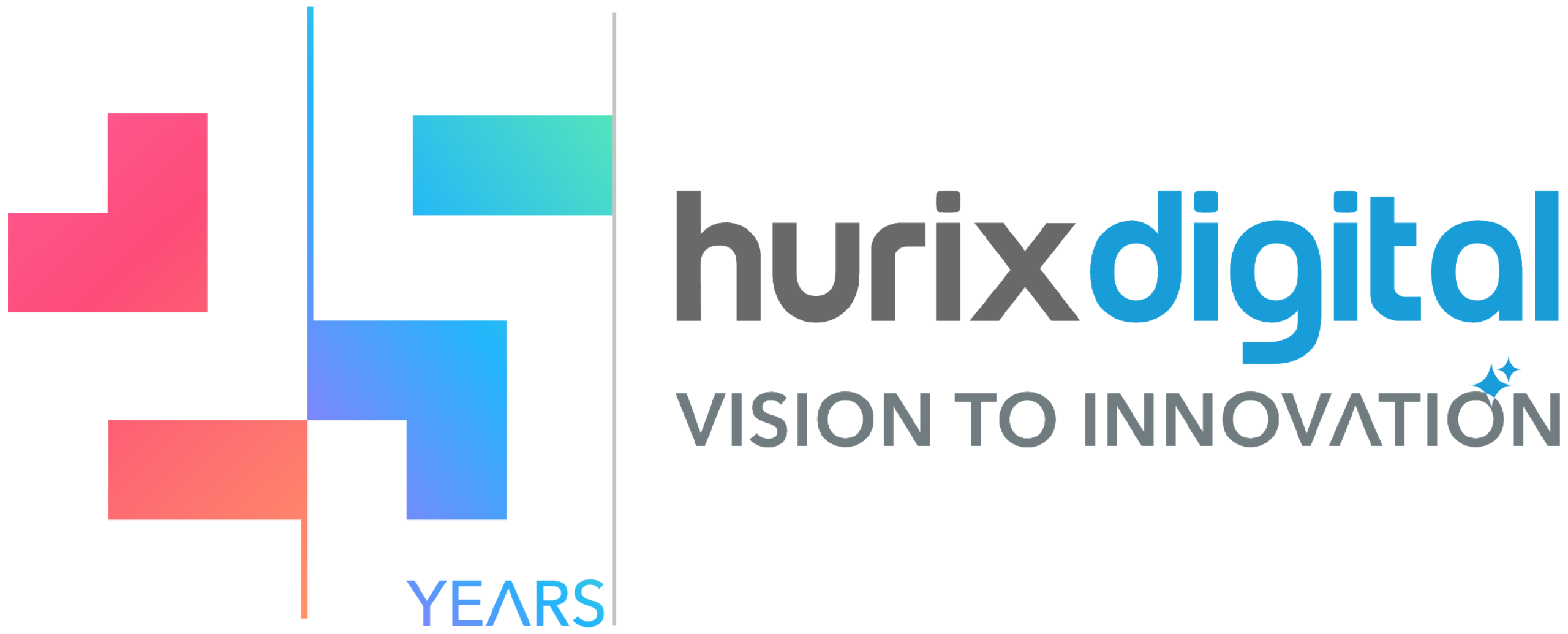
What Secrets are Top Tech Firms Hiding About Staffing Solutions?
Our neighbor runs a mid-sized software company. Last month, he offered a senior developer $250K, full remote, with ESOPs. The developer turned it down to join a startup offering $180K. When I asked why, my neighbor looked genuinely confused. “We offered everything,” he said. “What else could they want?”
That’s the thing about technical staffing in 2025. Money stopped being the answer sometime around 2021, but nobody sent the memo to hiring managers. And since then, the technical talent market has gone completely sideways. Companies are throwing signing bonuses at problems that aren’t about money. Recruiters are sending the same generic LinkedIn messages to developers who get fifteen similar ones daily. Recruiters in the HR department typically use keyword-matching software to screen resumes. And then they wonder why they can’t find good people. Meanwhile, brilliant developers are sitting at home, undiscovered because their resume doesn’t contain the “right” buzzwords.
The companies winning the talent war skip the old playbook completely. They’ve moved beyond posting jobs and hoping for the best. They’re building talent ecosystems, creating opportunity networks, and thinking about staffing as a strategic capability rather than an HR function. And they’re asking completely different questions than everyone else.
Table of Contents:
- How Do We Attract Scarce, High-Demand Technical Talent Effectively?
- Can Technical Staffing Solutions Truly Enable Rapid Team Scaling?
- How to Future-Proof Our Tech Workforce Against Evolving Skill Gaps?
- What’s the ROI of Investing in Premium Technical Staffing Solutions?
- Beyond Hiring: How Do We Retain Top Technical Talent Long-Term?
- What Critical Metrics Evaluate a Superior Technical Staffing Partner?
- Where Can We Find Highly Specialized, Niche Technical Expertise Quickly?
- How Do Staffing Strategies Align with Our Long-Term Digital Transformation?
- What are the Best Practices for Managing Distributed Technical Teams Effectively?
- How Does Data and AI Inform Our Future Technical Staffing Decisions?
- A Final Word
How Do We Attract Scarce, High-Demand Technical Talent Effectively?
The best developer we ever hired found us through a GitHub issue. Not a job posting. Not a recruiter. She was fixing a bug in our open-source library, got curious about the company behind it, and reached out. We weren’t even hiring for her role. Created the position just for her.
People miss the reality: exceptional technical talent doesn’t look for jobs on job boards. They’re solving interesting problems. If you want to attract them, you need to be where they are, doing what interests them. Not with recruitment marketing. With actual interesting work.
A gaming studio we are in talks with streams their architecture decisions on Twitch. Sounds insane? Their last three senior hires came from viewers who got excited about the technical challenges they were solving. No job postings. No recruiters. Just developers watching other developers tackle hard problems and thinking, “I want to work on that.”
But most companies do the opposite. They hide their interesting work behind NDAs and corporate walls, then wonder why their job postings attract mediocre candidates. Your “competitive salary and benefits” posting competes with ten thousand identical ones. Your live debugging session of a distributed systems problem? That’s unique. That shows what working with you actually means.
The scarcity narrative needs rethinking, too. Yes, good developers are scarce. But they’re not hiding. They’re just not looking where you’re advertising. One startup found its entire technical team through Stack Overflow answers. They’d identify people giving thoughtful, detailed solutions to complex problems, then reach out with specific opportunities related to their expertise.
Speed kills more opportunities than requirements. The developer who’s perfect for your role today has three other offers by next week. Those companies that conduct four rounds of interviews over six weeks are essentially conducting exit interviews, as the candidate is already gone by the time they decide. The fastest-growing companies we know generally make offers within 72 hours of first contact. Risky? Less risky than losing every good candidate to faster competitors.
Can Technical Staffing Solutions Truly Enable Rapid Team Scaling?
“We need to triple our engineering team in three months.” We often hear when we talk to clients looking for our TaaS services. Usually from startups that just raised funding or enterprises that finally got budget approval. They think staffing solutions are multiplication machines. Input money, output developers.
Reality check: We watched a unicorn startup try to scale from 20 to 80 engineers in a quarter using every staffing solution available. Six months later? They had 45 engineers; half the original 20 had quit, and productivity had actually decreased. Rapid scaling isn’t about how fast you can hire. It’s about how fast you can integrate without destroying what already works.
The only rapid scaling we have seen work involves parallel tracks, not exponential hiring. You bring in a staffing partner like Hurix Digital to build an entirely separate team working on a discrete project. No integration overhead for your existing team. No culture dilution. Once that satellite team is functioning, you gradually integrate. We helped one fintech platform scale from 30 to 120 engineers in this way over eight months. Three separate teams eventually merged into one organization.
Technical staffing solutions can enable rapid scaling, but not through brute force. The smart ones provide pre-formed teams, not individual contributors. Much easier to integrate a functioning unit than to build one from scattered individuals. A logistics client needed blockchain capabilities fast. Instead of hiring twelve blockchain developers individually, they took our TaaS services that provided an entire blockchain team, including an architect, developers, and QA. Operational in four weeks versus ten months.
The dirty secret about rapid scaling: most of the time, you don’t actually need to triple your team. You need specific capabilities at specific times. That healthcare startup that wanted to triple its team? They really needed data pipeline expertise for six months, then ML operations for four months, then performance optimization for three months. Sequential expertise, not permanent headcount explosion. Staffing solutions providers like Hurix Digital understand this and provide capability waves, not body shops.
How to Future-Proof Our Tech Workforce Against Evolving Skill Gaps?
Nobody in 2015 was hiring for prompt engineers. In 2020, Rust developers were unicorns. Today? Both are standard requirements. The skill landscape changes so fast that by the time you identify a gap, train for it, and hire for it, the next gap has appeared.
We consulted for a bank that tried to future-proof by training everyone in blockchain in 2018. By 2021, they’d abandoned all blockchain projects, but desperately needed cloud-native expertise. The blockchain training was worthless, but worse, it created skepticism about all future training initiatives. Their attempt at future-proofing actually made them less adaptable.
Contrast that with a media client that took a different approach. Instead of betting on specific technologies, they partnered with Hurix Digital. Every quarter, they’d bring in experts in emerging technologies for three-month residencies. These experts wouldn’t just build—they’d teach. Their permanent staff got exposed to everything from quantum computing to edge deployment without committing to any single bet.
The skills portfolio approach works better than skills prediction. Just like financial portfolios, you diversify. Some permanent staff become specialists in core technologies. Others become generalists who can adapt quickly. Staffing solutions fill the gaps between. When new needs emerge, you’re never starting from zero. Someone on the team has at least peripheral knowledge.
But here’s the counterintuitive part: the best future-proofing might be accepting you can’t future-proof. Instead of trying to have every skill internally, build relationships with staffing partners like Hurix Digital that help you track the bleeding edge. When quantum computing suddenly matters for your cryptography, you don’t need quantum experts on staff. You need to know where to find them quickly. The meta-skill becomes vendor management, not technology prediction.
What’s the ROI of Investing in Premium Technical Staffing Solutions?
A startup hired budget developers through a low-cost staffing solution. Saved 40% on hourly rates. Six months later, they rewrote everything those developers built. The code worked, technically, but it was unmaintainable, unscalable, and undocumented. Total cost went in millions, plus six months of delayed product launch. The premium solution they rejected would’ve just cost $200K more upfront..
Quality compounds in ways spreadsheets can’t capture. In addition to providing better developers, premium staffing solutions provide developers who make everyone around them better. One insurance platform tracked this carefully and took our TaaS services. We helped them improve code review processes, suggested better testing practices, and mentored their junior developers. The uplift effect on the permanent team was worth more than the contractors’ direct output.
Risk mitigation is an invisible ROI until something goes wrong. Premium staffing solutions providers like Hurix Digital carry better insurance, have deeper benches for replacement, and usually guarantee some level of output quality. When a budget staffing solution’s developer disappears mid-project (happens more than you’d think), you’re stuck. When a premium solution’s developer leaves, they replace them immediately with someone who’s already briefed on your project.
Beyond Hiring: How Do We Retain Top Technical Talent Long-Term?
Retention discussions usually focus on the wrong end of the problem. Companies obsess over exit interviews when they should study entrance experiences. The seeds of departure are planted in the first month, sometimes the first week.
One pattern we have noticed across dozens of companies: technical talent decides whether to stay long-term within 90 days. They are not updating resumes on day 91 consciously. But something shifts. They either feel like they belong and have a future, or they start keeping options open. Every retention strategy that doesn’t address those first 90 days is playing catch-up.
Smart companies use staffing solutions to prevent boredom, not replace bored employees. They bring in specialized contractors working on cutting-edge projects, then have permanent staff collaborate with them. Permanent employees get exposed to new technologies and approaches without leaving. We helped one gaming company reduce technical turnover by half after implementing “innovation rotations” where permanent staff could work with staffing solution experts on experimental projects quarterly.
The remote work genie can’t be put back in the bottle. Companies demanding a full-time office presence are bleeding talent to those offering flexibility. But here’s what’s interesting: it’s not about being fully remote. It’s about having choice. Developers want to work from home when they’re in deep focus mode and come to the office for collaboration. Staffing solutions that provide this flexibility often retain talent better than permanent positions that don’t.
What Critical Metrics Evaluate a Superior Technical Staffing Partner?
Everyone measures staffing partners wrong. They count placements, track time-to-fill, and measure cost-per-hire. Those metrics tell you if a staffing partner can provide bodies. They don’t tell you if those bodies will actually help.
The metric that matters most: time-to-productivity. Not time-to-start, time to actually deliver value. One staffing partner might provide developers in a week who take a month to become productive. Another takes three weeks but provides developers contributing on day one. Most companies measure the first and miss the second.
Knowledge transfer coefficient sounds made-up, but matters enormously. When staffing partner resources leave, how much knowledge leaves with them? Good partners ensure knowledge stays through documentation, handoffs, and structured transitions. Bad ones create knowledge cliffs where their departure sets you back months.
Cultural catalyst score beats cultural fit assessments. Instead of asking “do they fit our culture?” ask “do they improve our culture?” The best staffing partners provide people who bring new perspectives, challenge assumptions constructively, and introduce better ways of working.
Where Can We Find Highly Specialized, Niche Technical Expertise Quickly?
Finding React developers? Easy. Finding React developers who understand WebAssembly, have built browser extensions, and know Chrome’s manifest v3 intimately? Then that’s not that easy anymore.
It is basically impossible to succeed with the traditional approach of posting ultra-specific job requirements and waiting for candidates to respond. The five people on Earth who match your exact requirements aren’t checking job boards. They’re probably happily employed, well-compensated, and not interested in your full-time position. But they might consider a three-month contract to solve an interesting problem.
Specialist staffing solutions maintain networks that traditional recruiting can’t touch. They know the person who wrote the library you’re using. The consultant who implemented similar systems at three competitors. The researcher whose paper you’re basing your architecture on. Relationships are cultivated over time, not candidates in a database.
Academic partnerships provide surprising niche expertise access. Universities have graduate students and researchers working on cutting-edge problems who need real-world applications. We helped one autonomous vehicle company source computer vision expertise through university partnerships—not as employees or traditional contractors, but as research collaborations. They have expertise, and researchers have data and problems.
Industry adjacency provides unexpected expertise sources. That niche skill you need in financial services? Someone in gaming might have it. The specialized knowledge for your healthcare application? Might exist in aerospace. Staffing solutions with cross-industry reach like Hurix Digital can spot these non-obvious connections.
How Do Staffing Strategies Align with Our Long-Term Digital Transformation?
Digital transformation initiatives fail 70% of the time. This is usually not because of technology but because of people. Companies buy cloud platforms, adopt agile methodologies, and implement DevOps, and then wonder why nothing actually transforms. They changed the tools but not the team.
Staffing strategies that ignore transformation goals create anchor effects. You hire permanent staff for current needs, then try to transform around them. Smart companies align staffing with transformation from day one. They bring in transformation expertise through staffing partners while gradually upskilling permanent teams.
The transformation talent paradox: you need people who’ve done it before, but every transformation is unique. Someone who transformed a bank might fail at transforming a retailer. Context matters more than experience. The best staffing strategies provide advisors who’ve seen multiple transformations, not just implementers who’ve done one.
Also, phased staffing for transformation works better than big-bang hiring. Phase one: bring in architects and strategists through staffing solutions. Phase two: mix permanent and contract implementers. And then finally, phase three: transition to a permanent team with contract overflow support. In this evolution, high expertise needs match transformation realities: execution bandwidth is limited, and maintenance capability is late.
Transformation velocity depends on staffing flexibility. When transformation accelerates, you need to scale quickly. When it hits obstacles, you need to pivot without massive layoffs. Staffing solutions provide this breathing room.
What are the Best Practices for Managing Distributed Technical Teams Effectively?
The distributed team fantasy: developers coding productively from beaches worldwide. The distributed team reality: somebody’s always in a meeting at 3 AM, nobody knows what anyone else is doing, and “quick syncs” take three days.
Successful distributed teams aren’t just remote versions of office teams. They require fundamentally different management approaches. The companies making distributed work actually have rebuilt their entire operating model around asynchronous communication, documented decisions, and outcome-based management.
Documentation discipline separates functional from dysfunctional distributed teams. Living documentation that captures decisions, context, and reasoning. One distributed team requires every significant decision to include a one-page “decision record” explaining what was decided, why, what alternatives were considered, and what assumptions were made. New team members can understand historical context without archaeology.
Presence doesn’t mean surveillance. The companies failing at distributed management install keystroke loggers and screenshot tools. The ones succeeding measure output and trust adults to manage their time. A distributed gaming studio client tracks one metric: delivered features that pass QA. As long as features are shipped on schedule with quality, developers can work whenever, wherever.
Communication architecture matters more than communication tools. Everyone has Slack, Zoom, and Jira. The difference is how they’re used. Successful distributed teams create explicit communication protocols. This type of discussion happens in Slack. That type needs a Zoom call. These decisions require written proposals. One team cut meeting time by half just by defining what didn’t need to be synchronous.
How Does Data and AI Inform Our Future Technical Staffing Decisions?
Every staffing company claims to use AI now. Most mean their keyword-match resumes slightly faster. However, real AI-informed staffing goes way deeper than automated screening.
The dangerous side of AI staffing: bias amplification. Train your AI on historical hiring data, and it’ll perpetuate historical biases. One tech giant discovered their AI recruiting tool downgraded candidates from women’s colleges because historically, they’d hired fewer women. The AI wasn’t sexist—it was perfectly reproducing human sexism. Now they use AI to identify bias in human decisions rather than make decisions themselves.
Skill trajectory prediction beats skill inventory. Instead of cataloging current skills, forward-thinking platforms predict skill development paths. A developer strong in Python and interested in machine learning will likely develop PyTorch expertise within 18 months. This predictive capability lets companies hire for future potential, not just current capability.
Network intelligence reveals hidden talent pools. AI can map professional networks to identify clusters of expertise. We helped one startup to discover a hidden community of Rust developers in Minneapolis by analyzing GitHub collaboration patterns. No job board would’ve surfaced this. No recruiter would’ve known to look there.
Performance prediction remains AI’s unfulfilled promise. Despite vendor claims, AI can’t reliably predict whether someone will succeed in a specific role at a specific company. Too many variables. Too much context. What AI can do: identify yellow flags that humans miss. Inconsistent employment patterns suggest issues. Skill claims that don’t match experience timelines. It’s better at disqualification than qualification.
A Final Word
After years of watching companies struggle with technical staffing, here’s what’s clear: the old playbook is dead. Posting jobs and hoping, throwing money at problems, treating staffing as an HR function rather than a strategic capability—none of it works anymore.
The companies winning the talent war play a completely different game. They build ecosystems rather than just filling teams, create opportunities rather than just filling positions, and think in terms of capabilities and outcomes, not headcount and hourly rates.
For organizations ready to evolve beyond traditional staffing approaches, the path forward requires partners who understand this new reality. Partners who can provide not just technical resources but strategic capability, not just bodies but transformation catalysts.
Hurix Digital’s Talent-as-a-Service (TaaS) model embodies this evolution, delivering the flexible, specialized expertise modern organizations need while maintaining the quality and integration that make augmented teams actually work. Contact us today and let Hurix Digital power your journey from staffing to transformation.

Vice President & SBU Head –
Delivery at Hurix Technology, based in Mumbai. With extensive experience leading delivery and technology teams, he excels at scaling operations, optimizing workflows, and ensuring top-tier service quality. Ravi drives cross-functional collaboration to deliver robust digital learning solutions and client satisfaction
 Upcoming Masterclass | Build an Army of Brand Evangelists using Training & Development | November 20th, 8:30 AM PDT | 11:30 AM EDT | 10:00 PM IST
Upcoming Masterclass | Build an Army of Brand Evangelists using Training & Development | November 20th, 8:30 AM PDT | 11:30 AM EDT | 10:00 PM IST

